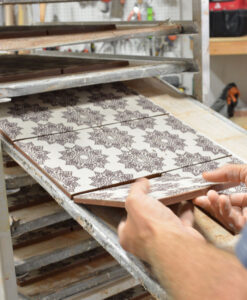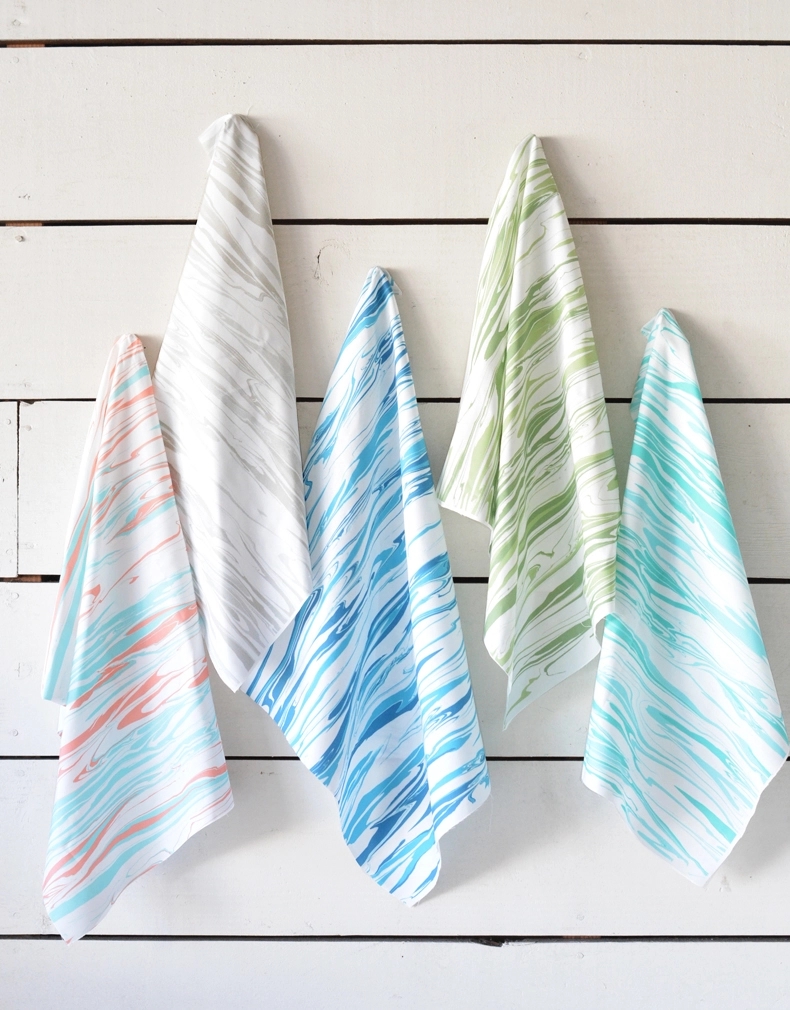
Recently I had the pleasure of interviewing Forrest Lesch-Middelton – an artist and educator living in my hometown who began making tile from clay at fourteen. Recently he has also begun making architectural tile for private homes and businesses alike.
Forrest was kind enough to take the time and show us his process for crafting stunning custom tiles from simple lumps of clay.
Forrest’s patterns combine ancient civilization motifs with contemporary geometric designs in beautiful repeatable motifs that repeat, creating beautiful repetition and flow. He took me through his process for creating these personalized tiles.
Patterns come from screenprinting, which starts by creating designs on a computer, creating repeat patterns (this is called Iznik), then transferring it onto a screen using photosensitive emulsion and printed negative.
Forrest works with specialty clay that has been extruded using a pugmill into ribbons.
Strips of clay are laid together on a workspace and then decorated using liquid clay (known as slip).
Screenprinted sheets can be applied precisely to the clay strips before being carefully peeled away to reveal a vibrant pattern underneath – now permanently adhered to the strips of clay.
Forrest aligns each tile’s screen printed transfer so it is registered uniformly.
He then uses a rubber rib to transfer the image from paper onto clay.
Imperfection should be expected with this process; each tile may display subtle variations; yet this unique aspect makes these handmade tiles so appealing.
Once the pattern has been transferred, strips are brought to the roller cutter which can then be adjusted precisely to trim each tile to its proper width.
Once cut, tiles are left on drywall for several days to dry before being sanded and fired in an on-site kiln which reaches temperatures of 2300 degrees. Following firing, any burrs or blemishes that remain are removed through further sanding steps.



